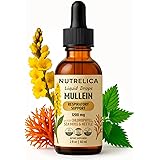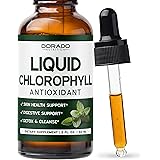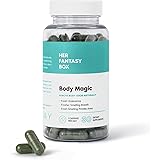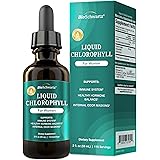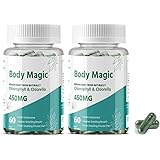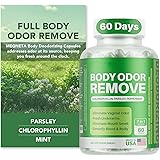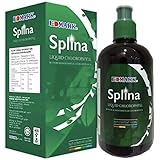Have you ever felt that overwhelming sense of stress, the kind that seems to seep into every part of your being, even showing up on your skin? Perhaps you’ve noticed more breakouts, unusual dryness, or an overall dullness during particularly hectic periods. As discussed in the insightful video above, this isn’t just a coincidence; it’s often your body’s way of signaling that your cortisol levels might be out of whack. Cortisol, often dubbed the “stress hormone,” plays a vital role in our daily functioning, with natural rises and falls. However, when chronic stress leads to persistently high levels, it can take a significant toll on your overall health, including the health and appearance of your skin. It’s crucial to understand how to effectively **lower cortisol naturally** to mitigate these effects.
The good news is that managing your stress and bringing your cortisol back into balance doesn’t always require drastic lifestyle overhauls. Often, it’s about making small, consistent adjustments that compound over time. Let’s delve deeper into practical, real-world strategies that can help you reduce the impact of stress on your body and promote overall well-being.
Understanding Cortisol and Its Impact on Your Skin
Cortisol is released by the adrenal glands, playing a critical role in the body’s ‘fight or flight’ response. It helps regulate blood sugar, reduces inflammation, and assists with memory formulation. However, chronic elevation of this hormone can suppress your immune system, disrupt sleep, and even lead to visible skin issues.
When your body is constantly in a state of high alert due to elevated cortisol, you might experience increased transepidermal water loss. This means your skin loses moisture more quickly, leading to dryness, irritation, and a compromised skin barrier. Furthermore, for those prone to acne, cortisol spikes can stimulate oil glands, resulting in increased sebum production and more frequent breakouts. This clearly demonstrates why understanding how to **lower cortisol naturally** is paramount for both internal and external health.
1. Evaluate Your Alcohol Consumption Habits
It might seem like a relaxing glass of wine after a long day helps unwind, but alcohol’s relationship with cortisol is more complex. While it may initially induce a feeling of calm, alcohol consumption can actually raise cortisol levels in the long run. Moreover, it significantly disrupts sleep quality, even if it makes you feel drowsy. The guidelines suggest men limit intake to no more than two alcoholic beverages per day, and women to no more than one. Exceeding these recommendations, even occasionally, can perpetuate a cycle of stress and poor recovery.
Consider swapping your evening drink for a calming herbal tea or sparkling water with a twist of lemon. This small change can lead to surprising improvements in your sleep and overall stress response. Reducing alcohol also supports your skin’s hydration and healing processes, as excess alcohol can dehydrate the skin and impede wound recovery.
2. Prioritize a Balanced, Nutrient-Rich Diet
Dietary choices play a pivotal role in managing cortisol. While extreme diets often backfire, a balanced approach focused on whole, unprocessed foods can be incredibly effective. Diets rich in fruits, vegetables, whole grains, legumes, nuts, and seeds are associated with better overall cortisol responses. These foods provide essential vitamins, minerals, and antioxidants that support cellular health and reduce inflammation.
Conversely, diets high in refined carbohydrates, processed snacks, and added sugars can negatively influence both cortisol and insulin levels. Such eating patterns can lead to energy crashes and prolonged stress on the body, affecting everything from immune function to wound healing. Aim for consistent, balanced meals to stabilize blood sugar and support your body’s stress-management systems. Remember, balance is key; an occasional treat is fine, but moderation prevents the negative physiological responses associated with excessive sugar and processed food intake. Also, ensure you are eating *enough*. Restrictive, very low-calorie diets (like the 1200-calorie diets popular in past decades) can put the body under significant stress, leading to cortisol spikes and making long-term health goals harder to achieve.
3. Thoughtfully Manage Your Caffeine Intake
Many of us rely on caffeine to kickstart our mornings or power through an afternoon slump. While coffee and other caffeinated beverages can offer certain health benefits, overdoing it can be counterproductive for cortisol management. Caffeine stimulates the adrenal glands, prompting them to release more cortisol, which can exacerbate feelings of anxiety and disrupt your sleep cycle if consumed too late in the day. It’s not about complete elimination for most, but rather smart consumption.
Consider setting a “caffeine cut-off” time, perhaps 1-2 PM, to ensure it doesn’t interfere with your body’s natural sleep rhythm. If you find yourself needing an energy boost later in the day, try these alternatives: * **Re-evaluate your food intake:** A small, balanced snack can often provide sustained energy. * **Hydrate with cold water:** Sipping ice-cold water can be surprisingly invigorating. * **Get moving:** A brisk walk, even a short one, can boost alertness. * **Engage your senses:** Certain scents like citrus (lemon, tangerine) or basil essential oils can offer a quick pick-me-up, stimulating your brain and improving focus without the jitters.
4. Cultivate Consistent Sleep Habits
Quality sleep is fundamental to managing cortisol levels and overall health. When you’re sleep-deprived, your body perceives it as stress, triggering a rise in cortisol. While the ideal 7-9 hours of sleep is often cited, stressing over a specific number can sometimes be counterproductive, leading to sleep anxiety.
Instead, focus on consistency: aim to go to bed and wake up at roughly the same time each day, even on weekends. This helps regulate your circadian rhythm, optimizing your body’s natural hormone cycles. Create a relaxing pre-sleep routine an hour before bed, such as reading a book, taking a warm bath, or listening to calming music. Crucially, turn off electronic devices like phones, tablets, and TVs, as the blue light emitted from screens can interfere with melatonin production, the hormone that signals sleep. A consistent routine, even if your total sleep hours vary, can significantly improve the restorative quality of your rest and thus help to **lower cortisol naturally**.
5. Integrate Regular Physical Activity
Exercise is a powerful stress reliever, and any form of movement can positively impact your cortisol levels. Physical activity helps metabolize excess cortisol and releases endorphins, natural mood boosters that counteract stress. Whether it’s a brisk walk, yoga, Tai Chi, or a more intense workout, the key is consistency.
Don’t get bogged down by intense fitness goals or tracking every step if it adds more stress to your life. Focus on simply moving your body more throughout the day. Here are some easy ways to integrate more activity: * **Take the stairs instead of the elevator.** * **Park farther away at the grocery store.** * **Stand up and stretch every hour if you have a desk job.** * **Go for short walks during your lunch break.** If a daily workout isn’t feasible, aim for a few sessions a week; any amount of exercise is better than none. The cumulative effect of these small movements significantly contributes to reducing stress and balancing cortisol, leading to improved mood, better sleep, and healthier skin. To truly **lower cortisol naturally**, a holistic approach combining these lifestyle adjustments will yield the most profound and lasting results.


